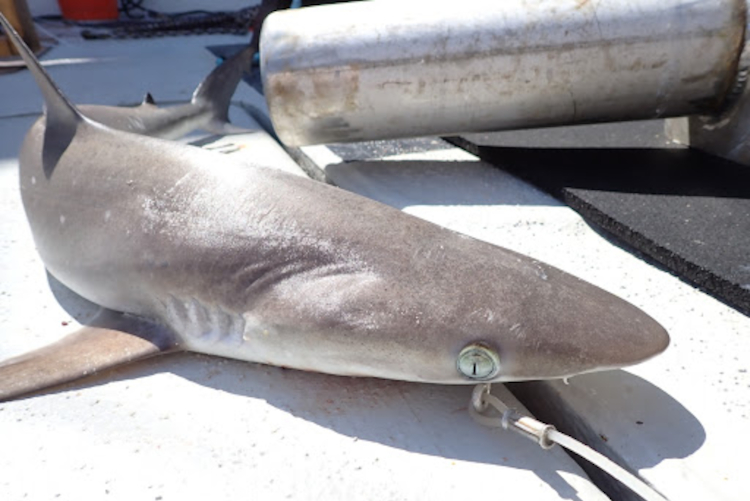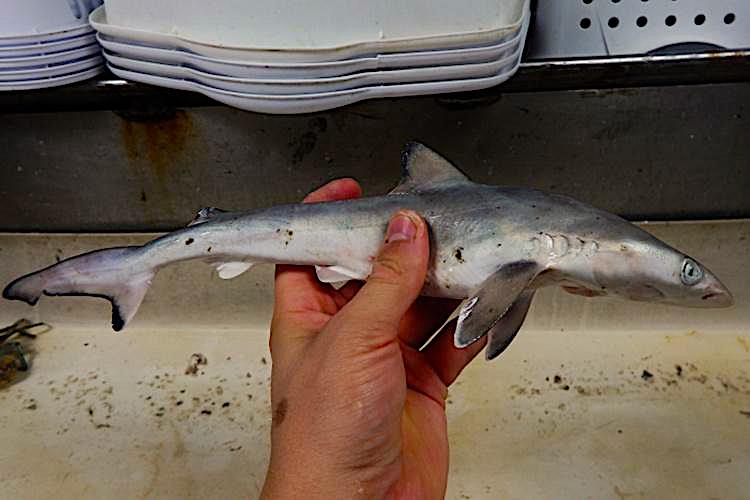Do Atlantic Sharpnose Sharks Get Smarter as They Get Older?

This shark’s brain never stops growing throughout its entire life, especially the regions responsible for motor control and sense of smell.
Research Need
Over their lifetimes, some species occupy different environments and exhibit distinct life stages, known as “ontogenetic shifts.” The life histories of most sharks involve these ontogenetic shifts, which can include changes in habitat and diet, as well as behavioral changes at the onset of sexual maturity.
In addition, fishes — including sharks — commonly experience indeterminate growth, whereby their bodies and organs grow throughout their lives. However, very little work has been done to explore changes in the shark brain across life stages, which could provide insights into shifts both in sensory perception and behaviors.
What did we study?
We measured changes in brain size (relative to body size), as well as the proportion the brain occupies by major brain regions, throughout ontogeny in the Atlantic sharpnose shark.

What did we find?
As with other fishes, brain size grew significantly with body mass throughout the entire life of the Atlantic sharpnose shark, but most quickly during juvenile life stages.
Brain regions increased in size as well, but at different rates. In particular, the regions of the brain that process odor cues (olfactory bulbs) and that are responsible for motor control (cerebellum) occupied larger and larger proportions of total brain size as the animal matured.

Changes in the relative size of the olfactory bulbs across life stages may reflect an increased reliance on smell at later stages in Atlantic sharpnose sharks, while changes in the relative size of the cerebellum may be indicative of the ability to capture faster prey or an increase in the migratory nature of this species as it moves to offshore habitats with the onset of sexual maturity.
Sharks have always had a reputation for having a keen sense of smell, but recent work from our lab also suggests that olfactory abilities may vary between shark species, in addition to changing during the lifespan of a single shark.
Anything else?
Because a shark’s brain continues to grow as the animal ages, its brain is very “plastic.” This means that changes in the environment, including human-caused disturbances, could significantly alter normal patterns of brain development — and, thus, behavior.
Reading
Laforest K, Peele E, Yopak KE. 2020. Ontogenetic shifts in brain size and brain organization in the Atlantic sharpnose shark, Rhizoprionodon terraenovae. Brain Behavior and Evolution 95:162-180. https://doi.org/10.1159/000511304
Summary compiled by Kara E. Yopak, an associate professor in the Department of Biology and Marine Biology at the University of North Carolina Wilmington. Her lab focuses on the evolution of the brain within and across sharks and their relatives, particularly the ways in which variation in brain size, structure, and cellular composition across species can inform complex behaviors and sensory specialization.
“UNCW ZoMBiE Lab” (Zootomical Morphology of the Brain and Its Evolution)
@ProfSharkBrain and @YopakZoMBiELab

This study was supported by startup funds from UNCW to K.E. Yopak, as well as internal UNCW funding schemes in the form of Applied Learning Funds (Department of Biology and Marine Biology) to K.E. Yopak, a CSURF Supply Grant to K.V. Laforest, and two College of Arts and Sciences Undergrad Research & Creativity Awards to K.V. Laforest and K.E. Yopak.
The text from Hook, Line & Science is available to reprint and republish at no cost, but only in its entirety and with this attribution: Hook, Line & Science, courtesy of Scott Baker and Sara Mirabilio, North Carolina Sea Grant.
- Categories:



